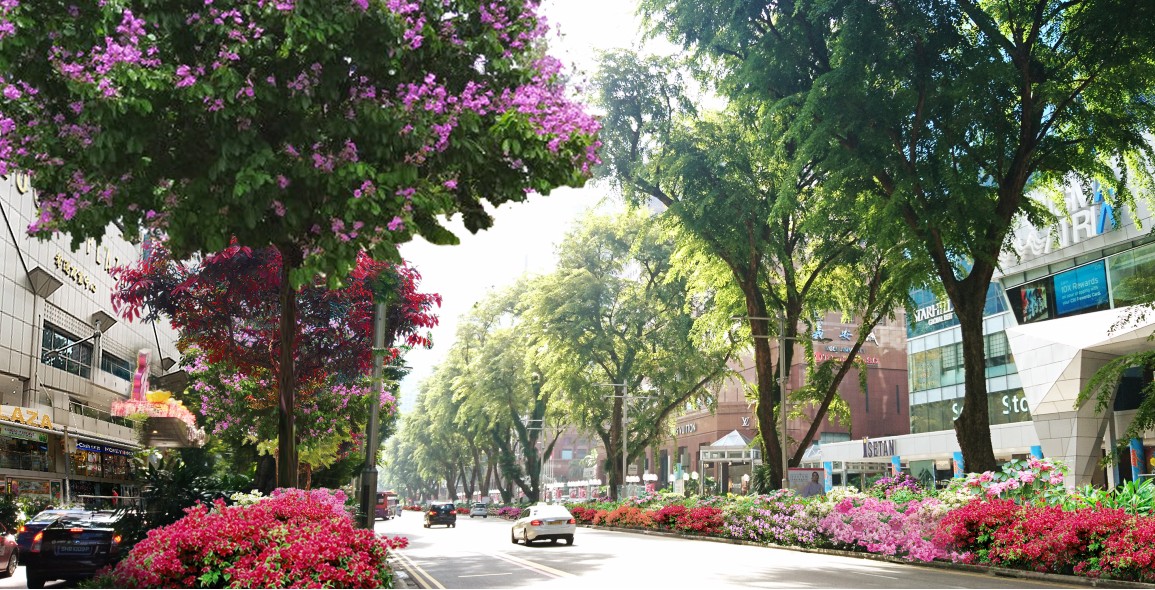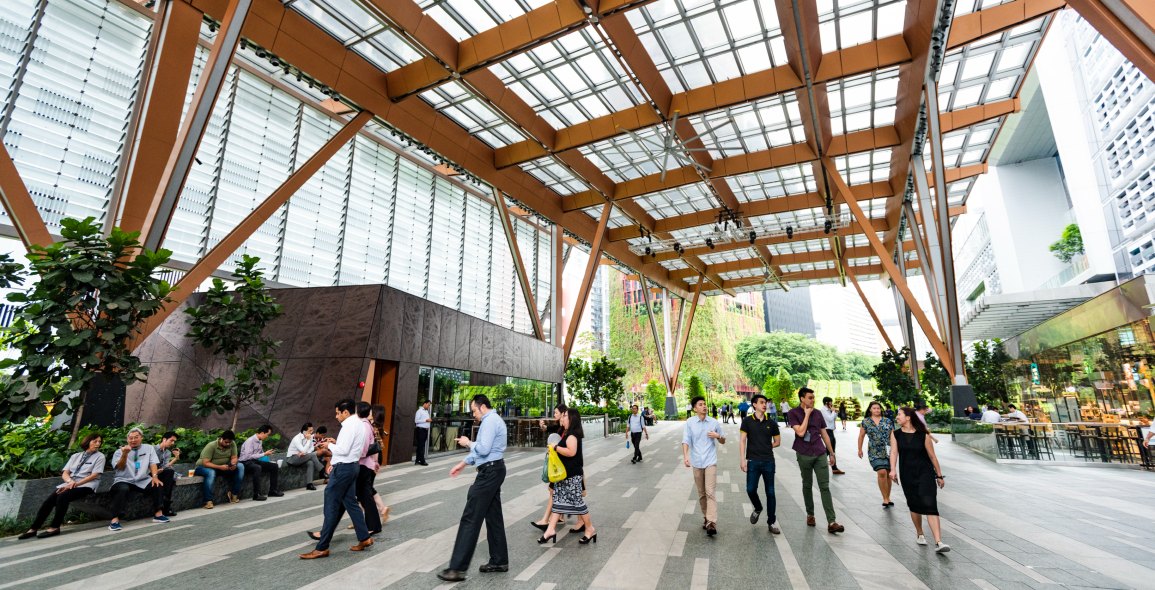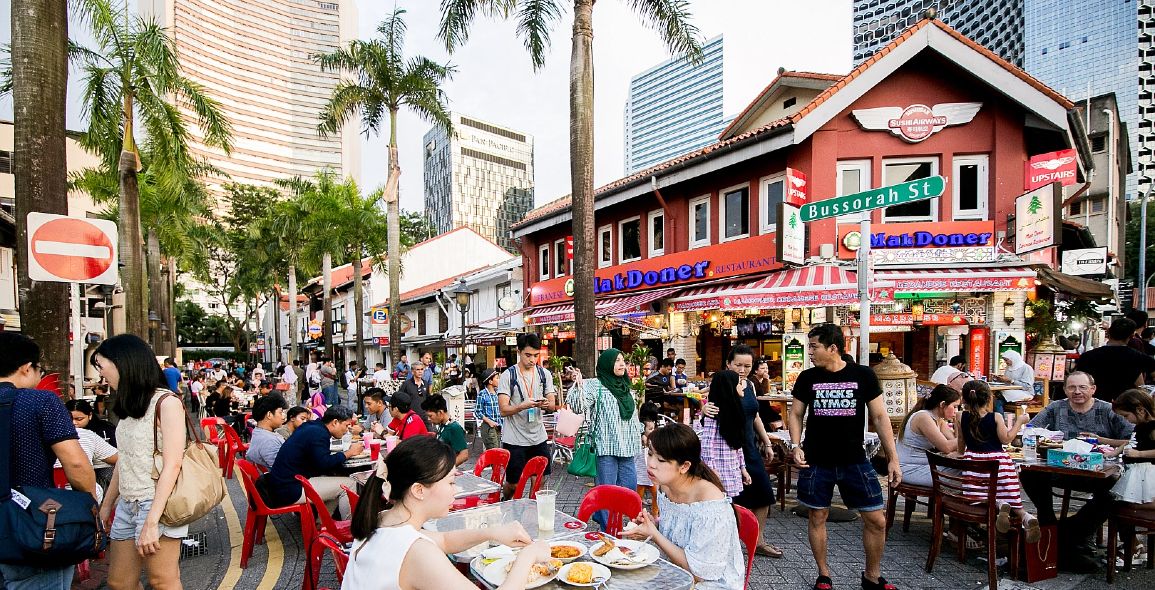
Editor’s note: Placemaking has become an increasingly common term in the design vernacular. Its relevance has been further heightened by the COVID-19 pandemic, where it is regarded as a means to strengthen community bonds. This is the last in a series of stories that examines its different facets.
Buying a product these days, whether essentials or luxury items, may no longer just be about visiting a particular shop or getting only that one item.
The retail landscape has evolved, where people have come to expect much more from a shop, mall or larger precinct.
They want the experience, the surprises, the customised attention. They also want greater convenience, ease, safety and a closer interface between the physical and online worlds.
The public realm, in terms of having delightful and engaging spaces, will increasingly play a larger role in shaping our shopping experience.
The effective use of data and technology will also influence the way people shop, when they shop and where they shop.
Three experts have been researching on the evolving retail landscape and the impact of its shifts on brands and their customers.
They are Jack Backen, Regional Director of global consultancy firm Cistri; Shaun Kwan, Co-Founder & Chief Operating Officer of Singapore firm Trakomatic (specialising in sensor and video technology); and Dr Kapil R Tuli, Professor of Marketing and Director of Retail Centre of Excellence at the Lee Kong Chian School of Business, Singapore Management University.
They spoke at the Urban Redevelopment Authority’s (URA) placemaking webinar in December 2020 on the digital transformation of retail and precinct marketing.
We caught up with them recently to find out what else they have been working on.
Retail experiences and offerings are constantly evolving. What should developers and landlords pay closer attention to?
Jack Backen: There is a view in the market that the retail model is shifting towards creating and curating more memorable experiences. But I think another important aspect to focus on is supporting and enhancing the convenience of the shopping trip and experience. Your average shopping trip may probably take place when you are on the way home from the train station or elsewhere. For such shopping trips to work well, there are some fundamentals that must be there. For example, the availability and accessibility of public carparks or public transport, the public toilets must be clean, the signages must be clear and so on. Get these fundamentals wrong and any kind of good experience offered may not be enough. Beyond the average shopping trip, this also applies to other kinds of shopping trips, such as those for fashion, leisure or entertainment.
Dr Kapil Tuli: Whether a mall is standalone or located as part of a distinct precinct, the tenant mix will become increasingly important. We need to pay closer attention to understanding what is the best tenant mix that will draw people into a mall or to an area, to know why people are visiting these places. What is the profile of people that come into a mall or a precinct? Does my business model resonate with the area? There is also the possible spill over effects from having particular tenants in an area or a mall that you can leverage on to create new opportunities, not just to support businesses but to benefit the mall or area as a whole.
A strong public realm is important in contributing to the value of a place. What potential benefits can landlords and developers yield if they proactively shape this?
Backen: When you are managing a development, there is an immense pressure to keep the costs down. From a landlord or developer’s point of view, why should they spend money on public spaces that are not likely to offer rent for them? Yet, there is an inherent incentive to create a strong public realm that can result in a good financial outcome.
From our research on the impact of the public realm in retail environments, we have found that high quality public spaces tend to increase the shopping mall’s catchment of visitors and customers. People who access and use more of the public spaces within and around the shopping mall tend to come from much farther away. As a result, you are attracting more diverse customers. They have invested in travelling longer to get to that mall or place and would thus want to stay longer and spend more. Therefore, there is a potential financial benefit from investing in a good public realm.
In addition, when you invest in creating a great place, there is also a stronger and more compelling story to tell around the value of the place, of the businesses and the stakeholders. This is positive not just for businesses but for larger communities.


With so much data and technology available these days, how can retail businesses approach and think about using them effectively?
Backen: You need to first focus on asking the right questions and identifying the problems that you are trying to address. For example, the questions could be, “What is it that you don’t know about your customers that you need to know? What is it about their behaviours and preferences that you need to know?” Retail is all about the customer preferences. From such questions, you then need to determine what data and insights will help you to answer such questions.
You also need to understand the strengths and weaknesses of the available streams of data and design different methods to gather different kinds of insights you are looking for. There is still space for the old-fashioned kind of research. No landlord in any market, whether their properties are in Orchard Road, a historical precinct or a suburban area, can claim to know everything about the area’s qualities or their visitors and customers’ preferences. One must get into gathering ground insights, talking to people, carrying out focus groups, organising town hall meetings or having one-to-one discussions.
Dr Kapil: I see data as a resource and technology a tool. There is often an assumption that if you have both data and technology, you can do anything. But many forget that there is a certain skill set required to understand data and the insights that come out of it. There is also a particular skill set needed to understand how you can use technology effectively.
Different facets of data can be used to address different aspects of problems or be used to support good decision making. For example, if I am a major stakeholder in a precinct, I may want to manage possible overcrowding in particular areas of a precinct. This is especially relevant in the current context of the ongoing COVID-19 pandemic. How can I do this? One option is to tap on data from sensors to understand and manage the flow of the crowds.
Another example is if I want to manage the potential issue of over cannibalisation among tenants or if I want to leverage on common aspects among tenants. Can I get into sales agreements with my tenants to see how we can create new opportunities to support their businesses or to tap on positive spill over effects that may arise among businesses?
Tell us more about how data and technology can be used to enhance the customer’s experience.
Shaun Kwan: In the past, we used to have various standalone tools that focus on different things, such as crowd density, people counting or facial recognition. Today, with greater advancement in both technology and the availability of data, we have moved away from just tapping on such options to looking at the entire visitor and shopper journey to tailor solutions to address specific problems and challenges.
In charting this out, we can propose how certain data and technology can be used to enhance various experiences, from the time people set off to visit a place, to what they do when they arrive. By mapping out the visitors’ or shoppers’ considerations, we can better understand their different shopping preferences and personas to further enhance the quality of their retail experiences and meet more of their specific interests and needs.
Can you share some specific examples?
Kwan: By using technology and data effectively, malls and retailers are already experimenting with enhancing the customer experience. For example, with approval from shoppers to recognise their digital profiles (which do not contain personal information), when they visit malls or shops, a repeat visitor could be offered loyalty points, discounts, and repeat purchase vouchers. When they pass certain digital signages that recognise their digital profiles, food and other suggestions can be offered to the shopper based on his or her shopping patterns or preferences.
This can also apply to other scenarios where you can possibly enjoy more seamless check-ins with digital recognition at attractions such as the zoo. In another setting, should you have to attend a small event physically, in the current pandemic context, a single digital pass and recognition can enable you to be able to visit different booths or set-ups with no need to check in multiple times. Warning messages could also be programmed to alert you to avoid certain places.
Another possibility is the use of augmented reality at shops to enable customers to “try on” shoes or clothes of different sizes and colours quickly and easily without the hassle of putting on each piece. Shops can potentially save on the inventory space in keeping a small stock in the shop. It also enhances the buying experience and customer’s satisfaction.


The ongoing pandemic has influenced our retail behaviours. What are some shifts you are observing and what are some fundamentals that will remain?
Backen: There is an increasing localisation of malls. A neighbourhood mall is all about its neighbourhood and it is a key part of its civic centre. People are becoming more localised in their area in how they identify with their immediate living area as their town and their place. With more people working from home, it means more are also visiting and accessing their local areas. More active placemaking can play a critical role in shaping this local identity and sense of place around the local civic and commercial hubs and areas. This could add richer layers to the local retail experience.
On fundamentals, I believe the strong physical retail shops and networks in Singapore will remain. This is because of how highly accessible the networks of malls and shops are across the country. There is a high density of the population able to support these, coupled with a strong eating and shopping culture. The extensive network of train lines also plays a part in encouraging people to visit malls and shops, where these are conveniently located.
Located within local retail environments are also food and beverage (F&B) outlets, wet markets and supermarkets, all of which are fundamentals for Singaporeans. While many F&B transactions may have gone online, the production of food products remain at the physical shops and a lot of these transactions still support the brick and mortar F&B outlets.
Dr Kapil: Good quality service, good quality products, at great convenience, will remain critical. These aspects will not change. Beyond this, the current pandemic is also educating consumers and retailers on the potential use of technology. We will increasingly see a mix of more hybrid forms of shopping options and experiences, that have both online and physical dimensions.
One thing that people have figured out quite quickly and easily, and come to expect in this new landscape, is the ability to order online and pick up their products easily. Or to go into the store to check certain products and be able to order them online. Consumer behaviour will shift in embracing and expecting a closer integration and interface between online and physical worlds. More retailers in Singapore and other cities are also already tapping on technology to offer a more frictionless consumer experience. For example, some are providing online waiting systems that minimise waiting time at shops.
Kwan: While retail spaces may be further adapted and adjusted in response to changing needs, the retail landscape is likely to see more quality and diverse retail experiences for customers. With access to data and technology, retailers can plan and curate more targeted options and possibilities for different customer segments in enhancing their retail experience.
What are you excited to see in the retail environment of the future?
Backen: There is an increasing momentum in the recent years to shape and create a stronger public realm in our retail and other built environments. I am looking forward to seeing more interesting and exciting ideas and effort in this aspect, where you are visiting a place not just because of another new shop. There could be something new and surprising happening there and it is changing all the time.
This story is contributed by the URA’s magazine Skyline (Issue 14).
Interested to find out more about placemaking? Sign up for the upcoming seminar taking place next month from 3 to 5 August 2021. Click here to find out more.


 Share
Share












